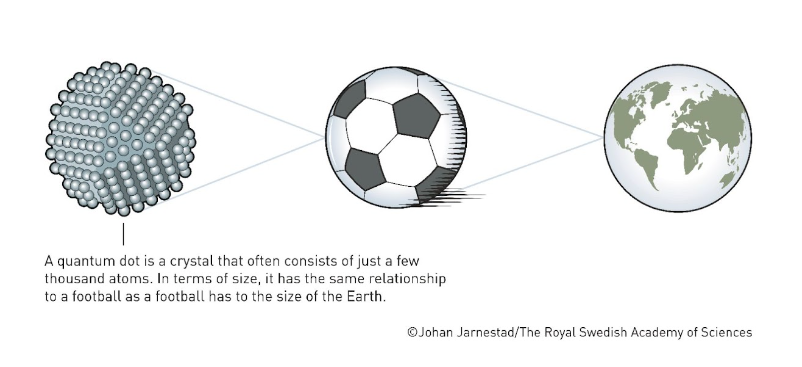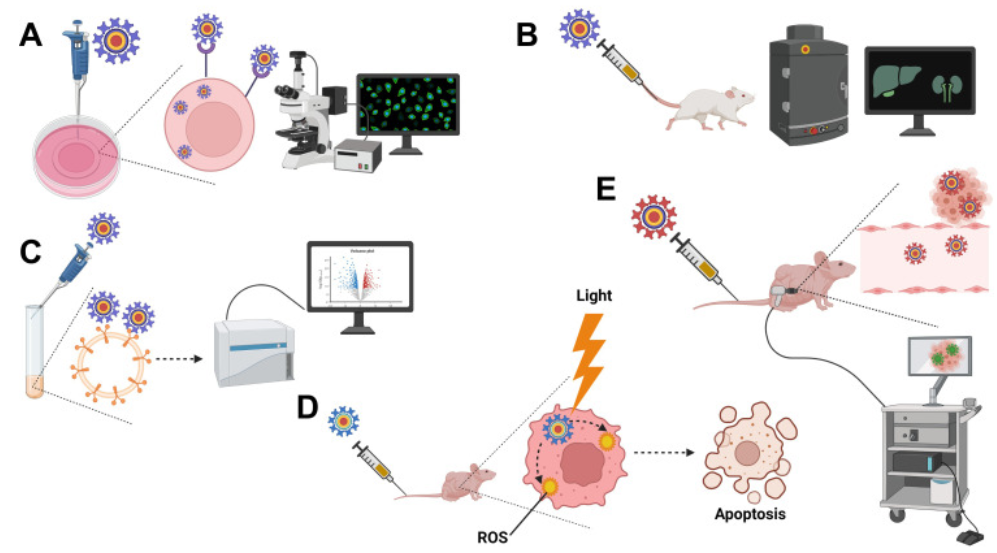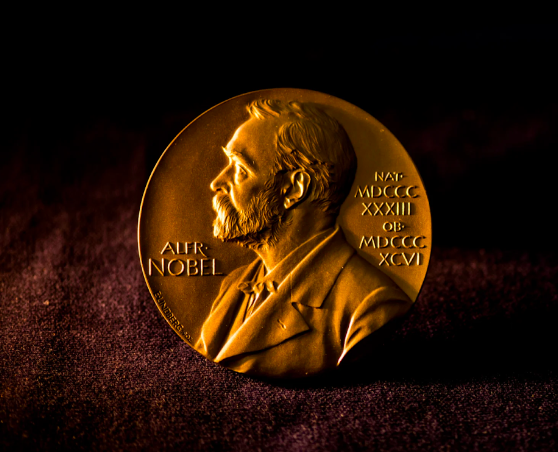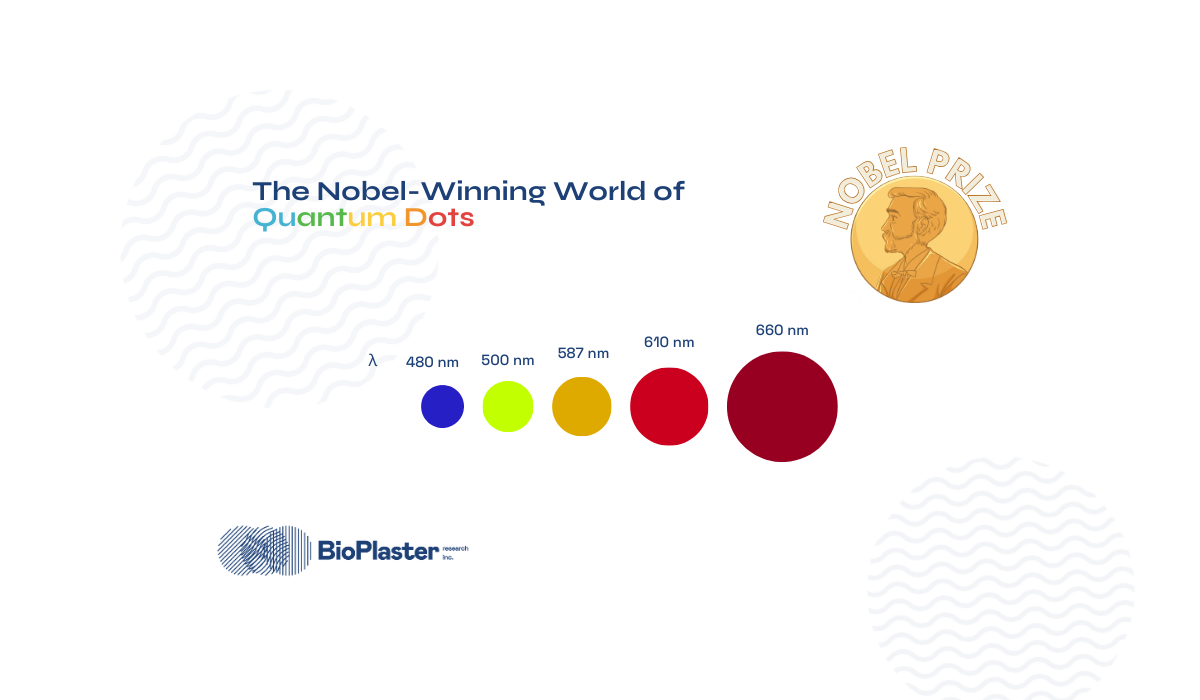The recent announcement of the 2023 Nobel Prize in Chemistry to Moungi G. Bawendi, Louis E. Brus and Alexei I. Ekimov for their pioneering work on quantum dots highlights the profound impact of this innovative invention.
But what are Quantum Dots?
Quantum dots, often described as nanoscale semiconductors, have been used in state-of-the-art displays and in the most advanced medical diagnostic computers.
Quantum dots are small artificial particles that measure only a few nanometers in diameter or 10^-9 (a nanometer is one billionth of a meter).

What makes quantum dots truly remarkable is their ability to manipulate light and electrons at the quantum level. This unique property gives them a wide range of applications in diverse scientific fields and industries.

Here are some applications of quantum dots:
1. Advanced screens: Quantum dots have revolutionized visualization technology. By incorporating nanostructures, manufacturers have been able to produce brighter, more vibrant and energy efficient displays. Quantum dots emit pure, vivid colors, making them ideal for high-definition televisions, smartphones, and computer monitors [2].
2. Targeted medicine: In the field of medicine, quantum dots are being used for the precise administration of drugs and the obtaining of pictures In vivo. Its ability to emit specific wavelengths of light depending on their size allows a very precise monitoring of the distribution of drugs within the body [3], among other applications. This promises more effective treatments with fewer side effects.

3. Solar cells: Quantum dots have demonstrated enormous potential in the development of highly efficient and flexible solar cells. Their tunable properties allow them to capture a wider spectrum of sunlight, increasing energy conversion efficiency [4].
4. Quantum computing: Quantum dots have the ability to trap and manipulate individual electrons, making them candidates for use in quantum bits, which are the fundamental components of quantum computers [5,6].
There is a special branch in the field of dots that has gained popularity among researchers, “carbon quantum dots”, a subset of quantum dots composed solely of carbon atoms.
Here are some notable aspects of carbon quantum dots:
1. Sustainable materials: Quantum carbon dots are usually derived from readily available and sustainable sources, such as carbon-rich organic compounds [7]. This makes them environmentally friendly and economically viable.
2. Biocompatible: Carbon quantum dots exhibit excellent biocompatibility, making them ideal for various biomedical applications. They can be used for bioimaging [8], drug delivery [9] and even cancer therapy [10].
3. Photoluminescence: Like traditional semiconductor quantum dots, carbon quantum dots can also emit light, but their emissions can be precisely adjusted by controlling their size and modifying the surface. This adjustability is advantageous for applications in displays, sensors and optical devices.
4. Energy conversion: Carbon quantum dots have shown promising advances in the development of next-generation solar cells [11], supercapacitors [12] and energy storage devices. Their ability to efficiently convert sunlight into electricity makes them candidates for sustainable energy solutions.
Why the Nobel Prize in Chemistry?

So why did the Nobel Prize in Chemistry recognize the work of Bawendi, Brus and Ekimov? His contributions to the field of quantum dots have been fundamental to advancing our understanding of nanoscale materials and their applications. Not only have they developed innovative methods for synthesizing quantum dots, but they have also discovered the fundamental science that governs their behavior.
In addition, his work has opened up new possibilities in several areas, from consumer electronics to healthcare and clean energy. Quantum dots are at the forefront of a technological revolution that promises to reshape industries and improve our lives. In recognizing their achievements, the Nobel Prize Committee highlights the profound impact that quantum dots have had both on scientific research and on practical applications.
Curiously, several research groups have manufactured quantum carbon dots from sargassum algae [13, 14], which is a biomass that has been damaging the Caribbean Coast for 12 years. This remarkable innovation not only shows the versatility of quantum carbon dots, but also highlights their potential in the use of sustainable and abundant biomass sources.

For us, at BioPlaster Research, carbon quantum dots derived from sargassum open up an exciting new avenue of exploration. The integration of carbon quantum dots derived from sargassum can revolutionize our biomass-based products, perfectly aligned with our commitment to sustainable and ecological solutions.
Carbon quantum dots are a living testimony to how scientific advances can generate unexpected synergies and drive innovation in surprising directions.
References;
- Efros, A.L., & Brus, L.E. (2021). Nanocrystal Quantum Dots: From Discovery to Modern Development. In ACS Nano (Vol. 15, Number 4, pp. 6192—6210). American Chemical Society. https://doi.org/10.1021/acsnano.1c01399.
- Shu, Y., Lin, X., Qin, H., Hu, Z., Jin, Y., & Peng, X. (2020). Quantum Dots for Display Applications. Angewandte Chemie, 132 (50), 22496—22507. https://doi.org/10.1002/ange.202004857
- Abdellatif, Ah. A.H., Tawfeek, H.M., Younis, M.A., Alsharidah, M., & Al Rugaie, O. (2022). Biomedical Applications of Quantum Dots: Overview, Challenges, and Clinical Potential. In International Journal of Nanomedicine (Vol. 17, pp. 1951—1970). Where Press. https://doi.org/10.2147/IJN.S357980
- Nozik, A.J. (2002). Quantum dot solar cells. Physica E: Low-Dimensional Systems and Nanostructures, 14 (1—2), 115—120. https://doi.org/10.1016/S1386-9477(02)00374-0
- Brown, K.R., Lidar, D.A., & Whaley, K.B. (2002). Quantum computing with quantum dots on quantum linear supports. Physical Review A - Atomic, Molecular, and Optical Physics, 65 (1), 19. https://doi.org/10.1103/PhysRevA.65.012307
- Wu, G.Y., Lue, N.-Y., & Chang, L. (2011). Graphene quantum dots for valley-based quantum computing: A feasibility study. Physical Review B - Condensed Matter and Materials Physics, 84 (19), 195463. https://doi.org/10.1103/PhysRevB.84.195463
- Jelinek, R. (2017). Carbon Quantum Dots: Synthesis, Properties and Applications (Carbon Nanostructures). https://doi.org/10.1007/978-3-319-43911-2
- Cao L, Yang ST, Wang X, Luo PG, Liu JH, Sahu S, Liu Y, Sun YP. Competitive performance of carbon “quantum” dots in optical bioimaging. Theranostics. 2012; 2 (3) :295-301. https://do.org/10.7150/thno.3912
- Nair, A., Haponiuk, J.T., Thomas, S., & Gopi, S. (2020). Natural carbon-based quantum dots and their applications in drug delivery: A review. In Biomedicine and Pharmacotherapy (Vol. 132, p. 110834). Elsevier Masson. https://doi.org/10.1016/j.biopha.2020.110834
- Desmond, L.J., Phan, A.N., & Gentile, P. (2021). Critical overview on the green synthesis of carbon quantum dots and their application for cancer therapy. In Environmental Science: Nano (Vol. 8, Issue 4, pp. 848—862). Royal Society of Chemistry. https://doi.org/10.1039/d1en00017a
- Carolan, D., Rocks, C., Padmanaban, D.B., Maguire, P., Svrcek, V., & Mariotti, D. (2017). Environmentally friendly nitrogen-doped carbon quantum dots for next generation solar cells. Sustainable Energy and Fuels, 1 (7), 1611—1619. https://doi.org/10.1039/c7se00158d
- Xiao, J., Momen, R., & Liu, C. (2021). Application of carbon quantum dots in supercapacitors: A mini review. In Electrochemistry Communications (Vol. 132, p. 107143). Elsevier. https://doi.org/10.1016/j.elecom.2021.107143
- Godavarthi, S., Mohan Kumar, K., Vázquez Vélez, E., Hernandez-Eligio, A., Mahendhiran, M., Hernandez-Como, N., Aleman, M., & Martinez Gomez, L. (2017). Nitrogen doped carbon dots derived from Sargassum fluitans as fluorophore for DNA detection. Journal of Photochemistry and Photobiology B: Biology, 172, 36—41. https://doi.org/10.1016/j.jphotobiol.2017.05.014
- Castañeda-Serna, H. U., Calderón-Domínguez, G., De la Paz Salgado-Cruz, M., García-Bórquez, A., & Farrera-Rebollo, R. R. (2021). Pelagic Sargassum as Source of Quantum Dots. In Nanotechnology in the Life Sciences (pp. 153—168). Springer Science and Business Media B.V. https://doi.org/10.1007/978-3-030-81557-8_7
Our Blog
At Bio+ we share relevant articles, research and news about innovation in bioplastics, sustainability and the environmental impact of materials. Find out how we're working for a more regenerative future.

